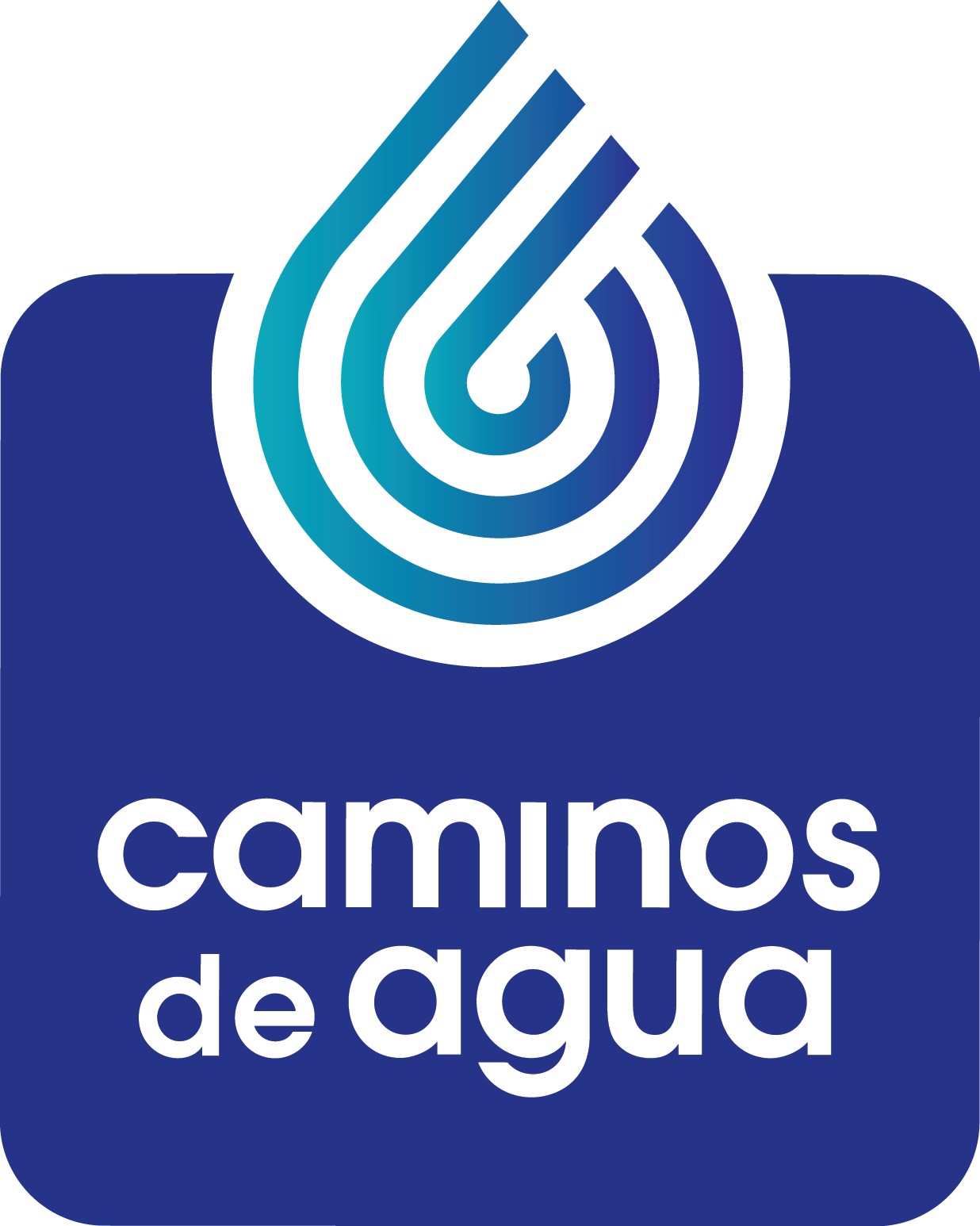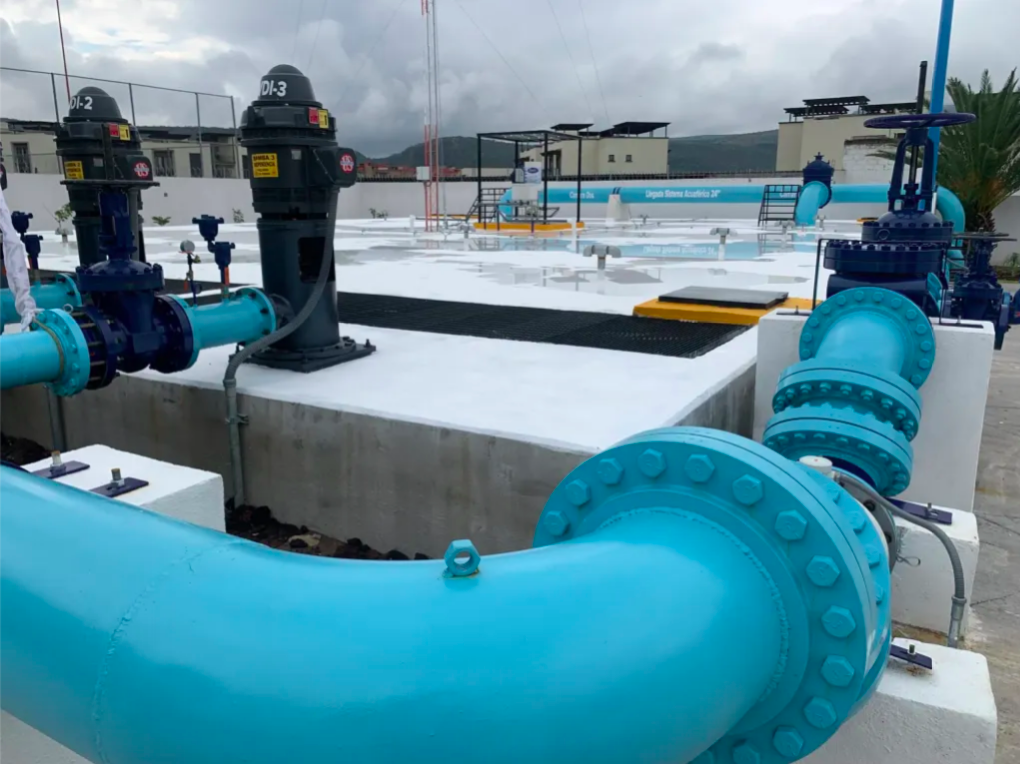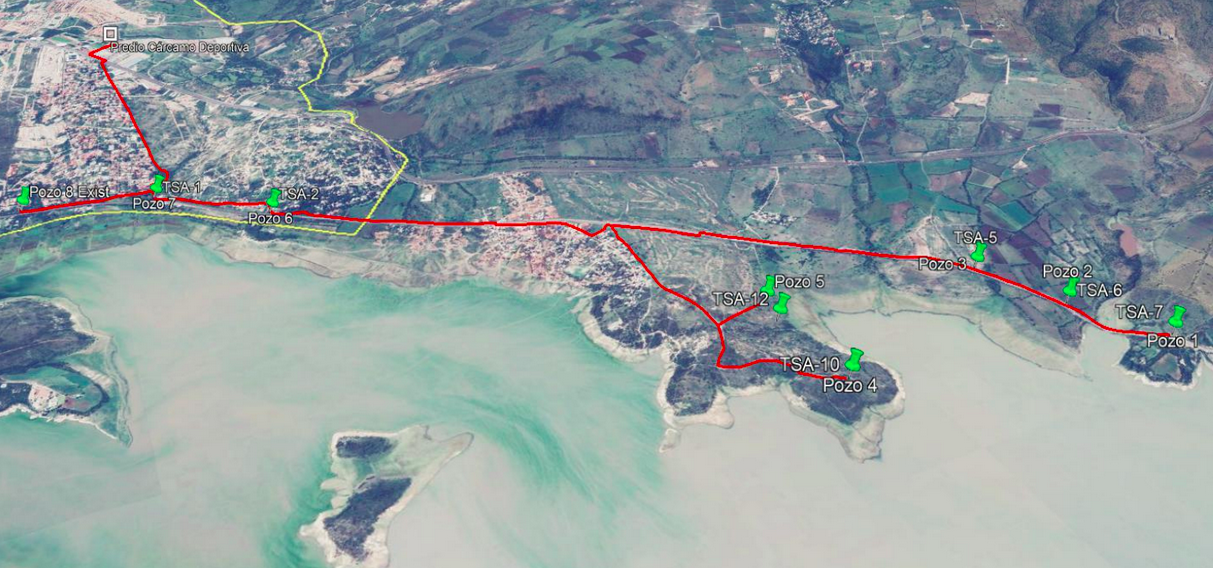Many Questions – but Few Answers – Regarding the Future of Water in Urban San Miguel
The ‘Acuaférico’: A Municipal Water Project Full of Uncertainties
By Romeo Robles
Photo: A section of the newly minted ‘Acuaférico’ project (credit: Boletín Gobierno del Estado de Guanajuato).
Background: What is the Acuaférico?
For residents of San Miguel de Allende, maybe you have noticed an increase in urban development over the last couple of years? The ‘Acuaférico’ is a response to that – a municipal water project aimed at meeting the increasing water demand expected in San Miguel over the coming years due to projected urban growth.
Through the drilling and interconnection of six new and existing wells, creating a network of 12km (~7.5 miles) of piping – all operated through a brand new remote control center – the local water authorities in charge of the project (SAPASMA for its acronym in Spanish) are looking to bring more water into the new urban developments as well as to the already existing municipal water system. The six interconnected wells, located close to the Presa Allende, pump water up to a newly constructed plant, called the Cárcamo (located close to the Unidad Deportiva). In total, the water is pumped upwards of 285 meters high (~935 feet) where it is then redistributed to developments in the western and northwestern upper parts of the city. The goal of this massive infrastructure project is to help provide urban San Miguel with enough water, but only until 2041.
The initial phase of the project, including the construction of the colossal Cárcamo plant, was completed in October of 2021 and is now in operation according to SAPASMA.
The Acuaférico has been full of controversies since its inception due to lack of transparency regarding its construction, operation costs, federal permits, lack of environmental studies, potential impact on surrounding rural communities, and lack of water quality and quantity analyses being made available to the public. In fact, it was only recently, after the project was already well underway, that the citizenry of San Miguel learned about the financial cost of the Acuaférico.
According to a presentation of the project given on October 2nd, 2021 by SAPASMA, the total cost amounted to at least MXN $105 million pesos (roughly USD $5.25 million dollars) for the tanks, wells, tubes, and the necessary physical infrastructure required. The operation costs still remain unknown.
More worrisome for us at Caminos de Agua, is the fact that the overexploitation of our aquifer, and the inclusion of new wells to the municipal water system, may only contribute to the growing decline of our water table as well as potentially contribute to increasing levels of water contamination and even new contaminants entering the water supply.
Why is this Project a Potential Threat to Our Water Quality?
Water contamination is directly linked to the over-extraction of our aquifer. Our region – the Upper Rio Laja Watershed – has been overexploited relentlessly for the past five decades. We’ve gone from having just around 600 wells in the 1960’s to more than 3,500 wells in 2021 (this without taking into account illegally drilled wells).
The more wells we drill, the deeper our water table drops. Annually, the aquifer is falling 2-3 meters (~6-7 feet). This is forcing us to dig wells deeper in order to reach the vital resource. Unfortunately, at these profound depths, water is highly contaminated with naturally-occurring chemicals such as arsenic and fluoride, a phenomenon that has stretched all across Northern Guanajuato – threatening a population of around 680,000 people, including the residents of the city of San Miguel.
Further complicating the issue, the exploitation of groundwater in such a condensed area – like the multiple wells being drilled around the Presa Allende for this project – has shown to specifically increase levels of arsenic in other parts of the world that are also affected by this contaminant due to a cone of depression that is created, which can expose more soil to oxygen and release more arsenic into the water.
In addition, given the new wells’ proximity to the Presa Allende, we have concerns about the potential introduction of new contaminants, specifically organic chemicals, like pesticides, from agricultural runoff. Historically, we have not been as concerned about these chemicals for a variety of reasons, but this new project now brings that issue into question.
The prolonged consumption of arsenic and fluoride – totally soluble in water and undetectable without complex instruments – is already having horrendous effects on the health of thousands in our region. Dental and skeletal fluorosis (teeth turning brown and bones become deformed and brittle), skin lesions, chronic kidney disease, cognitive development and learning disabilities in children, and several types of cancer, are some examples of the detrimental, and irreversible, health effects associated with drinking water contaminated with arsenic and fluoride.
The Search for Transparency
Photo: Current map of the Acueferico as presented in the 2040 Urban Development Plan for San Miguel.
“Every person has the right to access… water for personal and domestic consumption in a sufficient, safe, acceptable, and affordable manner.”
– Article 4, Mexican Constitution
In 2012, the Mexican Constitution was modified to recognize access to safe, sufficient, and affordable water as a universal human right. Due to the nature of the Acuaférico project, many doubts have been raised but very few answers have been given regarding its safety, sufficiency, acceptability, and affordability. Some of these doubts were raised by different specialists during the “Acuaférico Ignacio Allende” presentation. A talk organized by the citizen’s group ‘Yo soy San Miguel de Allende’ (I am San Miguel de Allende).
Dr. Gonzalo Hach Kuri, a geologist, stated that there isn’t enough data to determine whether this project will have a negative or positive impact in environmental terms. César Arias – activist, lawyer, and founder of El Charco del Ingenio – pointed out that several communities located close to the new wells have grievances that haven’t been addressed as well as raised specific doubts regarding construction, operation costs, and beneficiaries of this project, which had not yet been answered by SAPASMA.
At Caminos, we have a list of questions for consideration, which we have been unsuccessful in finding answers to:
How, when, and who is going to be in charge of determining if the water quality coming out of these new wells is safe for human consumption?
How can we be sure there is no direct infiltration of contaminants – including pesticides and other potential chemicals from nearby agricultural production – coming from the Presa Allende and surrounding area into these new wells?
What will be the water quality, environmental, and human impact of drilling this many new wells in such a small area?
Where are the studies addressing the environmental impact of this project and when will they be made available to the public? What do the studies address, what methodologies were used, who implemented them, and under what authority where they carried out? If such studies do not exist, why?
How are the neighboring communities impacted? It is assumed they will not be receiving this water given our current understanding of the project. How will such tremendous water extraction in one small area impact the water quantity and quality in these surrounding communities?
We will continue to search for answers to these questions and more as the project unfolds, and we will continue to update our supporters, like you, on our findings.
Want More La Gota?
Our last issue of La Gota focused on our acceptance into the Ashoka Fellowship Network – an international social entrepreneurship organization bringing together a vast network of talent and resources to our team. Learn more about our upcoming issues and read past issues of La Gota at:
Donate
The work of Caminos de Agua is dependent on the support of individuals like you who make up a large percentage of our annual operating budget. People like you are an integral part of creating access to safe and healthy water for so many. Please consider a donation today.



